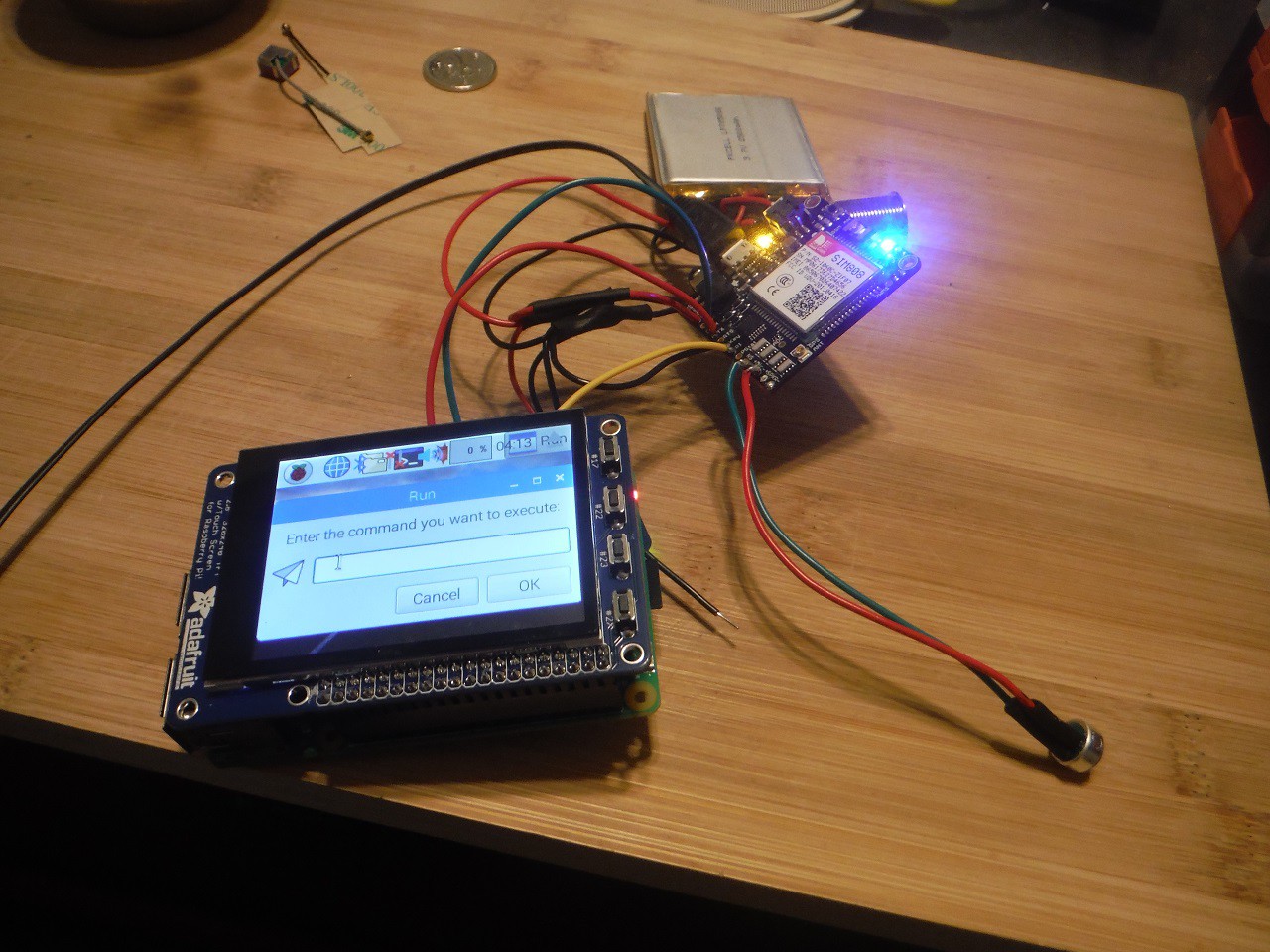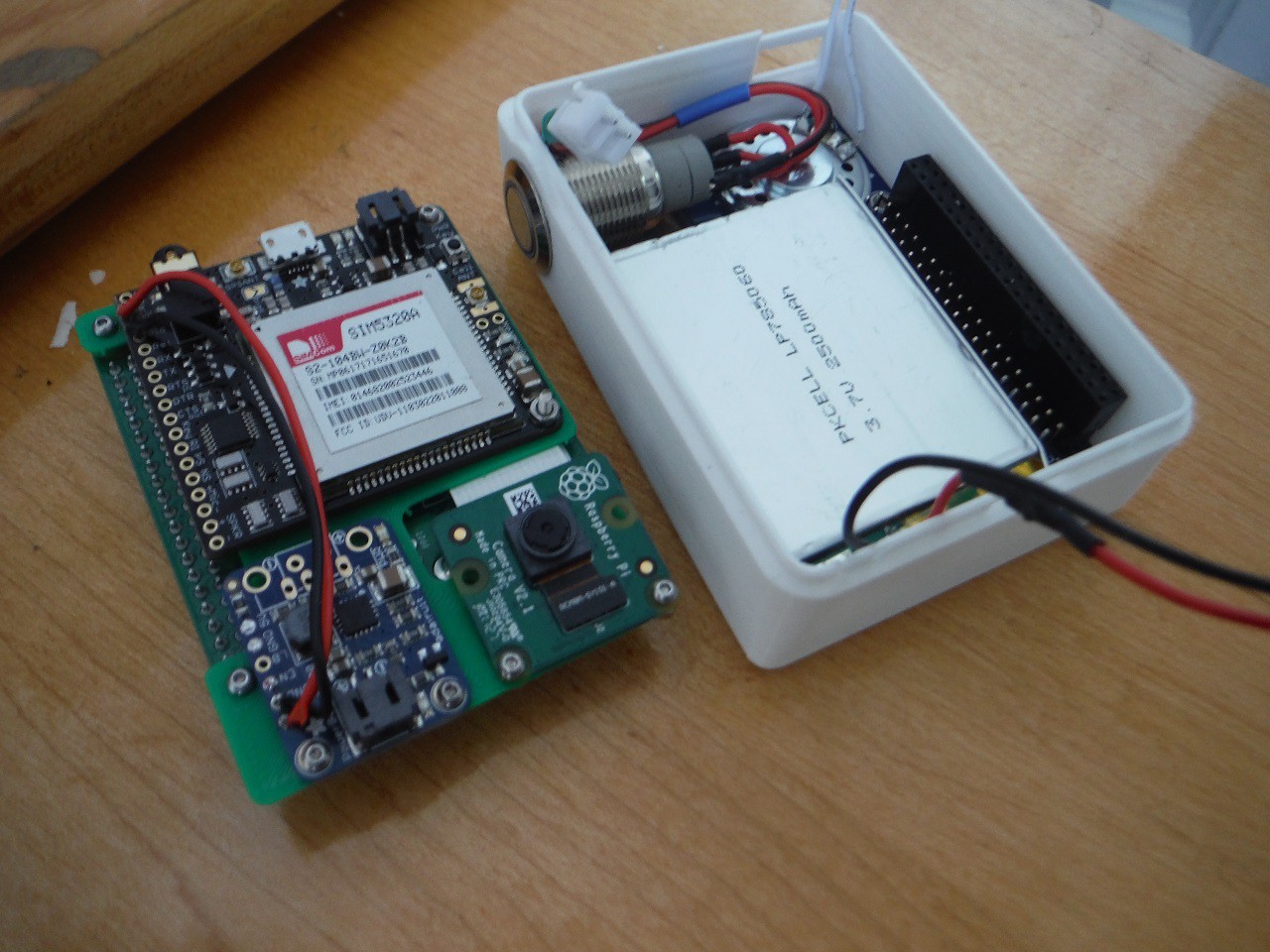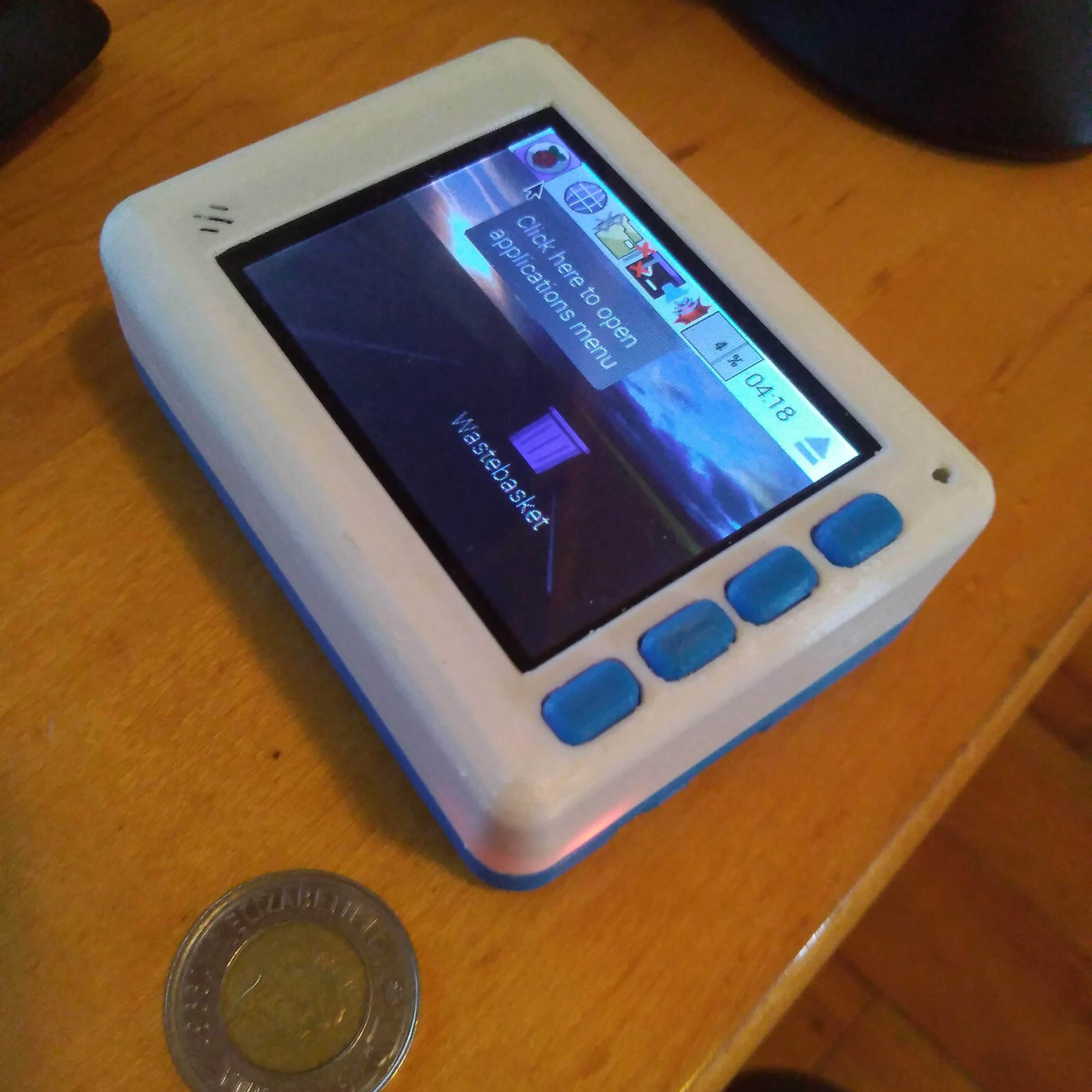About a year ago I set out to create a functional smartphone from a Raspberry Pi. Its been a fun adventure. I began this project with only a moderate amount of experience in working with electronics, and I’ve come a long way since that time. I am by no means the first person to create a raspberry pi phone there are one or two people who I am certain have come before me. In order to claim some sort of title for the work that I would be doing, I decided that I would attempt to create the smallest form factor phone possible given my knowledge and experience. This alone became quite the challege, but in the process I learned a great deal about product design, CAD, and 3D printing.

The majority of the electronic parts were purchased from Adafruit and Elmwood Electronics. I based the design of my phone off of the TyTelli that is several years old now. Unfortunately there are no wireless 2g networks currently operational here in Canada, so I will need to do a little bit more work on the software side to create a fully featured phone. In order to keep a “slim” form factor I needed to design some solutions to keep components from moving around to ensure that wires remained isolated from each other. In order to do this, I used a couple of JST connectors to allow the bottom half of the phone to separate from the top. I also created a small bracket to attach all of the extra circuit boards and camera. All that was left to complete was the wiring.

On the left circuitboards are attached to a bracket and then screwed onto the bottom of a RaspberryPi B+. On the right you can see how the battery, power button and speaker all fit snugly underneath the TFT.
The case itself took a huge amount of time to complete and went through several iterations. In the end I settled on the white case pictured below. Once I had settled on a case design it was time to put all of the final wiring into place. I’ve never had to solder in such a tight environment before, but the results were well worth it. I left a little bit of slack on the wires to prevent them from getting tugged too much and to enable servicing if required. It would save very little room to have them much shorter.

All of the wires connected and the phone prior to final assembly.
Finally with all of the wires in place it was time to close up the case. I’d created a simple latching mechanism to keep the case from popping open. I’d also removed the small USB hole seen in the above photos. Also added the “rCrumbl” wordmark for good measure.

The final product.
With the final product completed I just need to create the software to run on the phone. The TyTelli software will not run on a 3g network, so it will take some time to get a phone that operates outside of the command line. If anyone is interested in collaborating on the final stretch, let me know and I would love to have a conversation.
NOTE: I had to shelf this project to finish my masters thesis, but I'm hoping to start working on it again soon!
 Dylan Radcliffe
Dylan Radcliffe
Discussions
Become a Hackaday.io Member
Create an account to leave a comment. Already have an account? Log In.